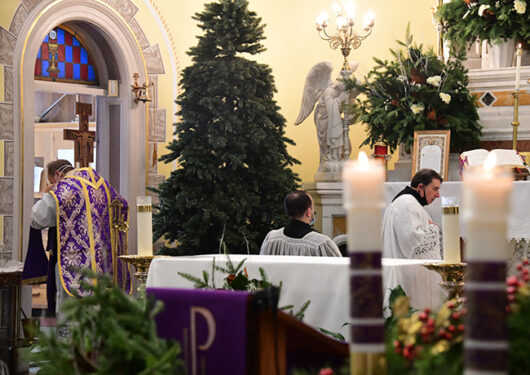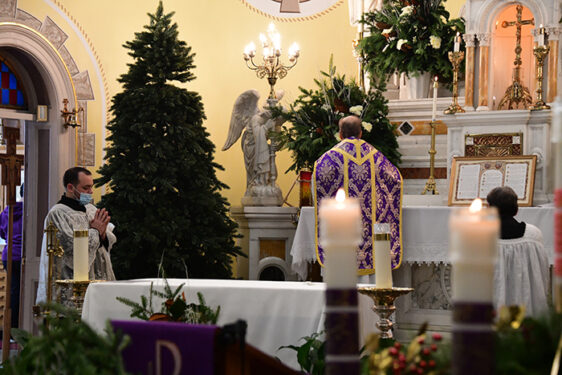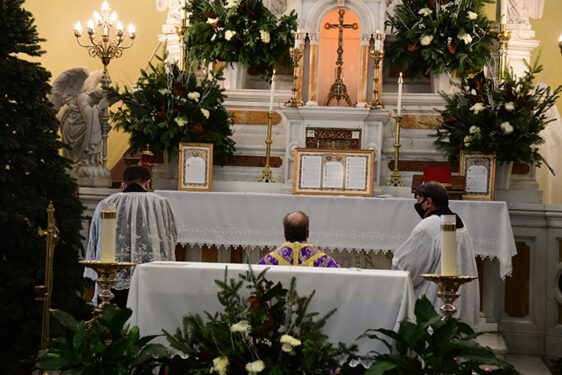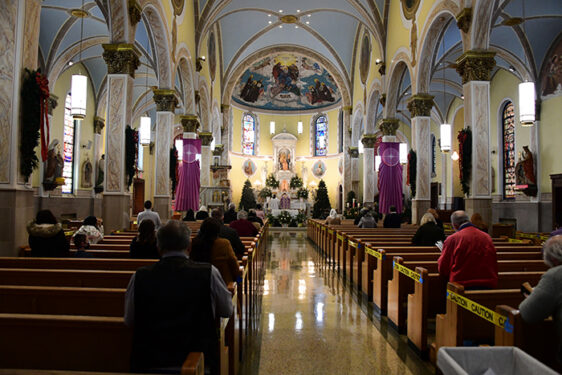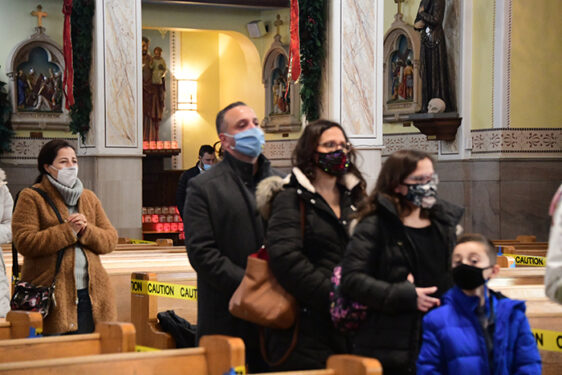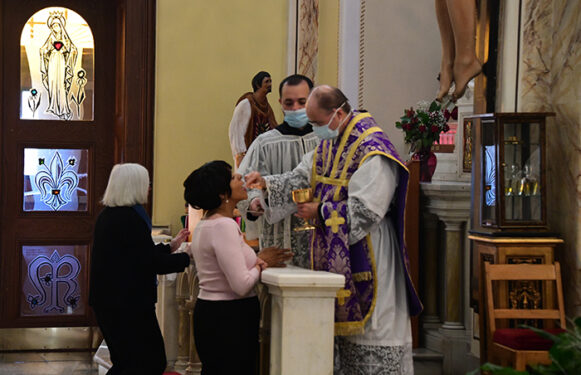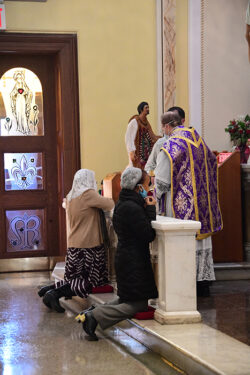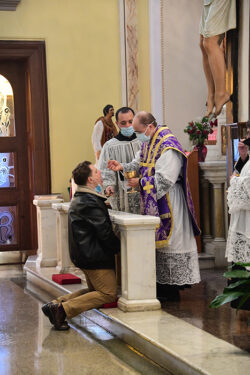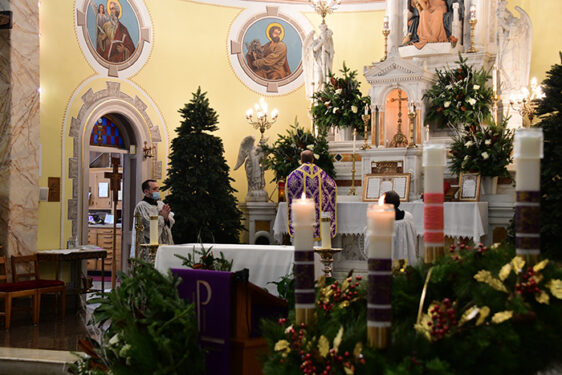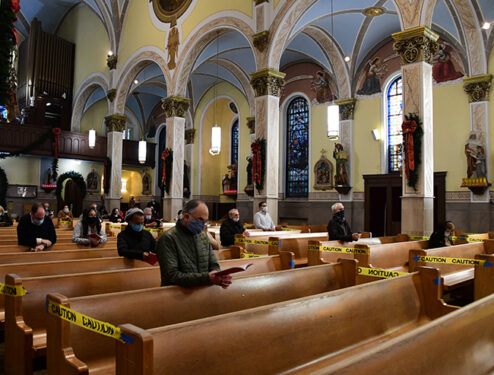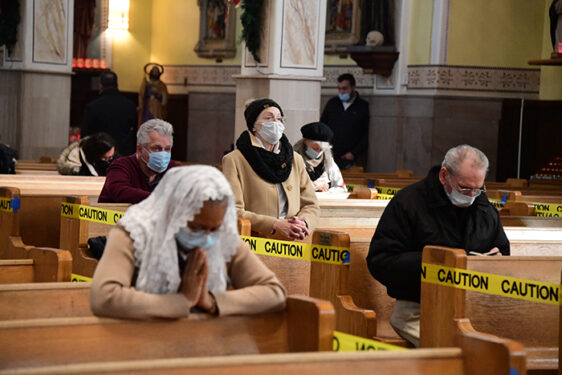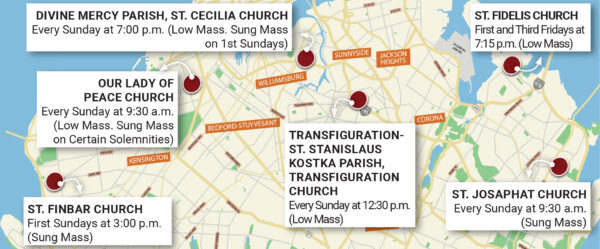MANHATTAN — Latin is everywhere. It might be in a joke by Icelandic comedian Ari Eldjárn in “Pardon My Icelandic” — his Netflix special released on Dec. 2 — or in the epic series “Barbarians” (Netflix) and “Romulus” (Sky Italy) — both filmed in Latin — which premiered late last year.
In recent months, we might have consumed the highest doses of mainstream Latin in ages. And when anyone hears a simple note of this melodious language, it immediately prompts Gregorian chants’ images and the old rite Mass.
Latin and Catholicism are intrinsically intertwined with the foundation of our Western Culture. They are in our roots and core, practicalities, and imagination. Latin is considered a dead language but still accounts for almost 30% of the modern English language. And interest is growing to the point that Pope Francis’ all-Latin Twitter account (Papa Franciscus: @Pontifex_ln) has almost one million followers.
And for some reason, its fascination is now attracting Millennials. Summarizing the report of the Foederatio Internationalis Una Voce, a lay organization attached to the Tridentine Mass, Dr. Joseph Shaw pointed out in an article published on Homiletic & Pastoral Review: “These data support the often-heard characterization of the Extraordinary Form (EF) as having a particular attraction for young people and families.”
Extraordinary Form Mass is the official name for the Traditional Latin Mass.
In the 362 dioceses and 52 countries included in the report, young people and families account for 72% of the EF congregations in North America, 69.2% in Central Europe, 62.3% in South America, 60.4% in Asia, 57.5% in Oceania, 55.5% in Northeast Europe, 51.7% in Northwest Europe, 31.7% in Southern Europe, and 28.6% in Africa.
“There is a definite increase in the youth interest in the Extraordinary Form Mass,” said Archbishop Alexander Sample of Portland, Oregon, known for its massive Latin Masses overflowing with the young faithful.
“One thing anyone who attends or celebrates the Extraordinary Form Mass notices is the high percentage of young people and young families that are present,” Archbishop Sample told The Tablet.
Archbishop Sample believes young people are looking for a more supernatural experience.
“The beauty of the Extraordinary Form of the Mass offers them a transcendent experience which touches hearts and minds,” Archbishop Sample said. “The reverence, the ceremony, and the sacredness, all contribute to this.”
In 1984 Pope John Paul II restored — under the special indult “Quattuor abhinc annos” — the Latin-only Tridentine Mass. It was banned worldwide after the Second Vatican Council in the ’60s and replaced by the Novus Ordo Mass — later known as the Ordinary Form of Mass in the Roman Rite — to allow laypeople to participate in the liturgy in their vernacular language. Since then, it has been progressively gaining followers.
Some of the most active promoters are committed laity from previous generations who are reminded of the Masses they attended in childhood. That is the case of Peter Ignazio Cardillo.
Cardillo was one of the pioneers of the restoration of the Latin Mass in the diocese and collaborator of the late Msgr. James W. Asip, who was appointed by then Brooklyn Bishop Francis John Mugavero to coordinate the weekly Latin Mass in the diocese.
“We both started it at the Monastery of the Most Precious Blood,” Cardillo remembers. “We used to have Mass there, once a month, on the first Sunday. And then on the third Sunday of every month, we had Mass at Christ the King High School.”
Traditional Liturgical Forms
Cardillo is the lay coordinator of the Latin Mass program in Our Lady of Peace, Gowanus, which has become the epicenter of the diocesan traditional liturgical forms for over two decades, a few years after Bishop Mugavero implemented the Ecclesia Dei Program.
“We came here sanctioned by Bishop (Thomas Vose) Daily around 1997 or 1998,” Cardillo remembered. “And then, of course, Bishop DiMarzio was very kind, and he continued the program. During all these years, we had had several coordinators, and now we have Father Rafael Perez.”
During a regular Sunday, the Latin Mass at OLP gathers about 65 parishioners.
“Our congregation is made up of many professionals, young people. A great number of young families come with their children. I would say that almost every year we’ve had one or two children wanting to make their communions in the old rite. Also, we have at least maybe two or three baptisms during the year. I’m surprised to see, almost every Sunday, we have new faces here. You know, and those new faces are young people,” Cardillo explained.
“I think the young generation is attracted to this Mass because of its beauty, of its silence, of the communication between the individual and his maker,” Cardillo added.
Vincent Robert Bongiorni agrees but goes further.
“We’re a very intuitive generation,” he said. “We’re always on our phone, always searching, looking for something or a definition or our real authenticity. And when we come across this, it is so different from every day where we’re captured by it.”
Bongiorni, 28, has been serving on the altar for ten years. He’s part of a close group of about two dozen young Catholics who met at the Traditional Latin Masses and started the Latin Mass program at St. Finbar Church, Bath Beach, along with Father Michael Gelfant, then the pastor, last year.
“My generation is growing up in such a chaotic time where the oneness of God is more evident in the traditional form to us. This Mass connects us to thousands of years of Catholic worship. It’s like coming home to a family that’s awaiting us. Our chaotic culture doesn’t exist in that Mass. The culture of our work, our social life, our entertainment. This Mass supersedes that. You feel that sense of completion that makes our minds focus on God. And it’s almost like therapy in a sense.”
Since June 30, Father Rafael J. Perez, parochial Vicar of Divine Mercy, Williamsburg, is the new coordinator of Ecclesia Dei Apostolate in charge of the diocesan Latin Mass program.
Father Perez, 34, speaks passionately about the liturgy and rituals. He has seen many seminarians and newly ordained priests interested in the Traditional Latin Mass. “Yes, in the case of recent times, there is a surge in interest amongst younger clergy in the old rite,” he said. “But it’s not exclusively to be relegated to that one group.”
He experienced the old rite Mass for the first time in Our Lady of Peace when he was in college and can put in perspective the vision from the pew with that from the sanctuary.
“One of the things that have struck me is the ability to pray. There’s a lot of silence, it is in a language that one would say, or at least people in the modern-day would say is dead,” he said.
“To the external spectator — whether it’s someone praying or attending the Mass — the priest in the sanctuary, separated, not facing them, might seem very esoteric and disconnected,” Father Perez explained. “But it’s not simply the priests doing their own thing. There’s mindfulness that I’m praying both with and for the people. I’m leading them into an encounter beyond myself. And that’s a tremendous, tremendous reality that is humbling and scary.”
Traditional Latin Mass times and locations
- Our Lady of Peace Church
522 Carroll St., Brooklyn
Every Sunday at 9:30 a.m. (Low Mass. Sung Mass on Certain Solemnities) - St. Josaphat Church
34-32 210th Street, Bayside
Every Sunday at 9:30 a.m. (Sung Mass) - Divine Mercy Parish, St. Cecilia Church
84 Herbert St., Brooklyn
Every Sunday at 7:00 p.m. (Low Mass. Sung Mass on 1st Sundays) - Transfiguration-St. Stanislaus Kostka Parish, Transfiguration Church
64-25 Perry Ave., Maspeth
Every Sunday at 12:30 p.m. (Low Mass) - St. Finbar Church
138 Bay 20th St., Brooklyn
First Sundays at 3:00 p.m. (Sung Mass) - St. Fidelis Church
123-06 14th Ave., College Point
First and Third Fridays at 7:15 p.m. (Low Mass)

